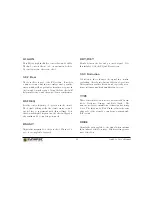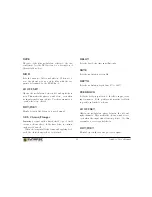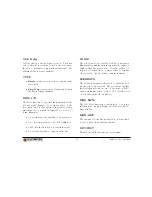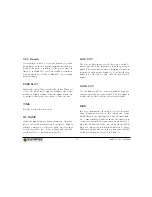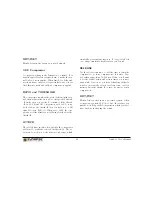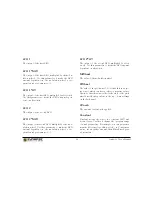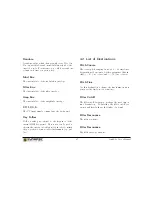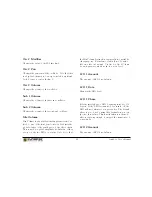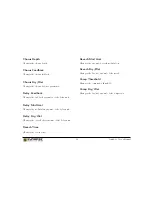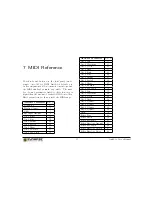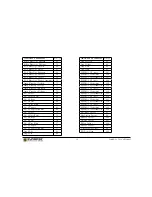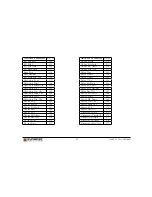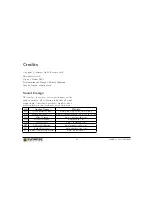
4 Modulation Matrix
One of the biggest strength of subtractive synthesizers
is their ease of use. The pitch, timbre and volume of a
sound and its progression over time can be controlled
in a simple and straightforward way. The simplicity is
achieved by employing a fixed structure with a limited
set of parameters, however.
In order to create more complex patches, modern
synthesizers offer a modulation matrix, where you can
choose from a set of sources and link them to almost
any sound parameter (see fig. 4)). In Reason, the con-
cept of a modulation matrix becomes yet more pow-
erful, as you can connect CV cables from other Rea-
son devices and modulate Antidote’s sound parameters
with them.
Figure 4.1: Modulation matrix.
The modulation matrix in Antidote is located in the
center of the interface. It comprises 5 rows with source,
amount and destination controls. The modulation en-
velope and both LFOs have one additional destination
available.
After choosing a source and a destination, the AMT
knob specifies how much to modulate the destination
parameter. The modulation is bipolar, both positive
and negative values are permitted. This is often useful,
for example you can create the classic inverted filter
envelope this way.
Destinations can be modulated more than once. For
instance, the filter cutoff frequency can be modulated
with a LFO and an envelope simultaneously.
4.1 List of Sources
Velocity
The velocity of the note, ie how hard you press the
key.
Arp Accent and Gate
The accent and gate signal coming from the arpeggia-
tor. See chapter 5 for a more detailed description of
the arpeggiator’s accent and gate signals.
25
Antidote User’s Manual
Содержание Antidot
Страница 1: ...User s Manual...









